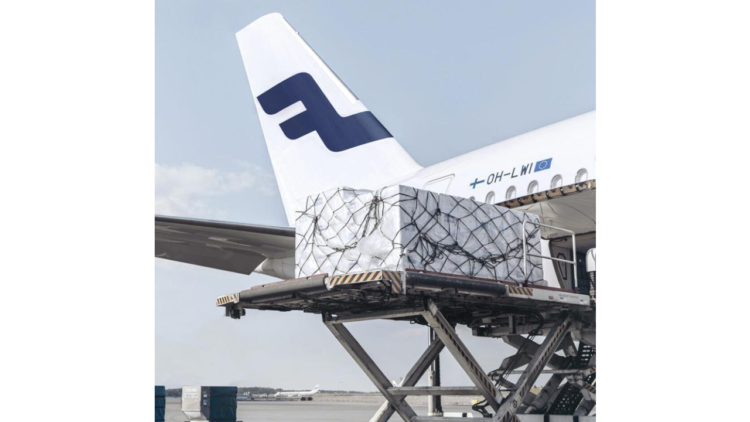Finnair reported a dip in overall passenger numbers and cargo volumes for March 2025, as industrial action and the later timing of Easter impacted operations. However, the carrier saw notable gains in transatlantic routes and continued resilience in certain cargo segments, according to the latest traffic data released Tuesday.
Cargo Traffic Slips Despite Gains on European and Transatlantic Routes
Total cargo volumes fell by 7.0% year-on-year to 12,161 tonnes, mainly driven by declines in Asian (-7.3%) and Middle Eastern (-36.4%) cargo lanes. This drop reflects ongoing challenges in those regions, including the phasing out of cooperation with Qatar Airways in January.
Conversely, Finnair’s cargo business showed strength in Europe and the North Atlantic. Cargo tonnage increased by 11.3% and 17.2% respectively in these markets, buoyed by strong demand and increased frequencies, particularly on routes to Dallas. Domestic cargo traffic also recorded a 19.5% rise, albeit from a smaller base.
Revenue cargo tonne kilometres (RCTKs) remained stable year-on-year at 75.3 million, indicating improved yield or cargo load efficiencies on longer-haul routes.
Passenger Traffic Impacted by Strikes and Calendar Effects
Finnair carried 916,100 passengers in March, marking a 2.3% decline compared to March 2024. The airline cited industrial action and Easter shifting into April as the main disruptors. Despite this, North Atlantic passenger traffic grew by 16.7%, supported by increased service frequencies. European and Asian traffic held relatively steady, while Middle Eastern and domestic routes saw more pronounced declines.
Capacity, as measured in available seat kilometres (ASKs), rose slightly by 0.9%. However, once adjusted for the end of wet lease operations to British Airways, overall capacity fell by 1.2%. Passenger load factor (PLF) dipped by 2.1 percentage points to 72.8%, with notable improvement in Asian and Middle Eastern markets but a drop across domestic, European, and transatlantic sectors.
Operational Punctuality Improves
Finnair maintained strong operational performance, with 85.8% of flights arriving on time—an improvement from 83.7% in March 2024. This uptick in punctuality comes despite the disruptions caused by strike actions earlier in the month.
Looking Ahead
Finnair is set to release its April 2025 traffic statistics on May 7, 2025. Analysts will be watching closely to assess the recovery trajectory, particularly in the cargo sector, and to evaluate the impact of operational adjustments following the end of wet leases and route realignments.
Going Green: Finnair Secures SAF Deal with DB Schenker
As part of its broader commitment to sustainable aviation, Finnair has taken a significant step forward in reducing the climate impact of air cargo. In March, leading freight forwarder DB Schenker announced it would purchase nearly 400 tons of Scope 3 CO₂e reductions—equivalent to approximately 120 tons of sustainable aviation fuel (SAF)—from the Finnish carrier.
The agreement forms part of a co-funding initiative that enables customers to directly support SAF adoption in aviation. In return, DB Schenker will receive a verified emissions reduction certificate, providing formal recognition of its investment in cutting air freight-related carbon emissions.
This move highlights a growing trend among logistics players to incorporate SAF into their decarbonization strategies and to collaborate with airlines on climate action beyond regulatory obligations.
“By working with customers like DB Schenker, we can accelerate SAF adoption and drive down the carbon footprint of air freight today—not just in the distant future,” said Gabriela Hiitola, Senior Vice President at Finnair Cargo.
Ambitious Climate Targets and Industry Alignment
Finnair has aligned its climate goals with the Science Based Targets initiative (SBTi) and is targeting a 34.5% reduction in carbon emissions intensity (CO₂e per revenue tonne kilometre) by 2033, using 2023 as a baseline.
The airline has also reiterated its longer-term ambition to reach net-zero emissions by 2050, in line with industry-wide goals set by IATA and ICAO.
“Our toolkit for reaching the target comprises investing in sustainable aviation fuels beyond regulatory requirements, further improving operational efficiency, optimizing our network, and investing in new aircraft technology,” Hiitola added.
SAF, which can reduce lifecycle emissions by up to 80% compared to traditional jet fuel, is considered a key lever in the aviation sector’s path to decarbonization. However, high costs and limited availability remain barriers to widespread adoption—factors that co-investment models like Finnair’s aim to address.





